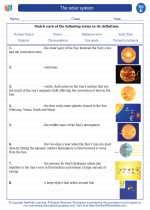Overview of the Solar System
The Solar System is a collection of celestial bodies consisting of a central star (the Sun) and all the objects that orbit it, including planets, moons, asteroids, comets, and meteoroids. The Sun, which is a massive ball of glowing gas, provides light and heat to the entire system. The gravitational force of the Sun holds the Solar System together, and its energy powers the motion and life of all the planets and other celestial bodies within it.
The Sun
The Sun is the largest and most massive object in the Solar System. It is a massive ball of hydrogen and helium gas, and its intense nuclear fusion reactions produce the energy that sustains life on Earth and drives the weather and climate of all the planets. The Sun's immense gravitational force keeps all the planets in their orbits and determines the structure and dynamics of the Solar System.
The Planets
There are eight planets in the Solar System, divided into two groups: the inner rocky planets (Mercury, Venus, Earth, and Mars) and the outer gas giants (Jupiter, Saturn, Uranus, and Neptune). Each planet has unique characteristics, such as size, composition, and atmosphere. They also vary in terms of their moons, rings, and other features that make them distinct from one another.
The Moons
Many of the planets in the Solar System have moons, which are natural satellites that orbit around them. For example, Earth has one large moon, while Jupiter has more than 70 moons. Some moons are similar in composition to planets, and others have unique features like volcanoes, ice geysers, and subsurface oceans, making them fascinating objects of study.
Asteroids and Comets
Asteroids are rocky objects that orbit the Sun, mostly found in the asteroid belt between Mars and Jupiter. Comets are icy bodies that also orbit the Sun, and they often have highly elliptical orbits that take them far from the Sun before bringing them back towards it. Both asteroids and comets have played important roles in the formation and evolution of the Solar System, and they continue to capture the imagination of astronomers and space enthusiasts.
Exploring the Solar System
Humans have sent spacecraft to explore and study various parts of the Solar System. These missions have provided valuable information about the planets, moons, asteroids, and comets, leading to new discoveries and deeper understanding of our cosmic neighborhood. The study of the Solar System is an ongoing endeavor, with new questions and mysteries awaiting exploration.
Study Guide
- What is the Solar System?
- Describe the Sun and its significance in the Solar System.
- Identify the eight planets in the Solar System and categorize them into inner rocky planets and outer gas giants.
- Explain the concept of moons and provide examples of interesting moons in the Solar System.
- Discuss the characteristics and significance of asteroids and comets in the Solar System.
- Summarize the importance of space exploration in advancing our understanding of the Solar System.
[The Solar System] Related Worksheets and Study Guides:
.◂Science Worksheets and Study Guides Fifth Grade. The solar system

 Worksheet/Answer key
Worksheet/Answer key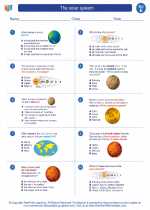
 Worksheet/Answer key
Worksheet/Answer key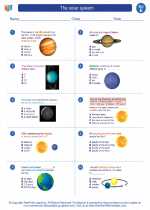
 Worksheet/Answer key
Worksheet/Answer key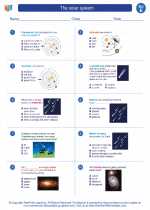
 Vocabulary/Answer key
Vocabulary/Answer key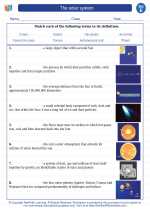
 Vocabulary/Answer key
Vocabulary/Answer key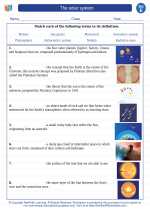
 Vocabulary/Answer key
Vocabulary/Answer key